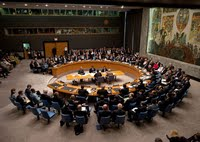One of the strengths of the Naval War College is that it constantly reviews and assesses its curriculum. In support of that effort, I have been reacquainting myself with E. H. Carr's seminal work "The Twenty Years' Crisis," which got me to thinking: Will we look back on the period of time between 1991 and 2011 as another two-decade interregnum marked by crisis and opportunity?
This isn't an entirely original thought. James Goldgeier and Derek Chollet opened this discussion two years ago when they published, "America Between the Wars: From 11/9 to 9/11." But I wanted to focus on the opportunities the United States had to fundamentally shape the global order that emerged after the end of the Cold War and why each attempt hasn't "taken."
The first opportunity came circa 1992, when the United States cast a long shadow over the entire international system, not dissimilar to its position in 1945. The Soviet Union had collapsed; Deng Xiaoping had yet to undertake his famed "southern tour," which started the boom that took China out of its post-Tiananmen Square malaise; the European Union was still in the process of being mid-wifed; and India, Brazil and Indonesia had not yet begun their ascent.

